Cladus: Eukaryota
Regnum: Plantae
Divisio: Magnoliophyta
Classis: Magnoliopsida
Ordo: Cucurbitales
Familia: Cucurbitaceae
Subfamilia: Cucurbitoideae
Tribus: Cucurbiteae
Genus: Cucurbita
Species: C. argyrosperma - C. cordata - C. digitata - C. ecuadoriensis - C. ficifolia - C. foeditissima - C. foetidissima - C. maxima - C. moschata - C. okeechobeensis - C. palmata - C. pedatifolia - C. pepo - C. radicans - C. ×scabridifolia
Name
Cucurbita L., Sp. Pl. 2: 1010-1011 1753.
Synonyms
* Mellouia Gasp.
* Melopepo Mill.
* Ozodycus Raf.
* Pepo Mill.
* Pileocalyx Gasp.
* Sphenantha Schrad.
* Tristemon Scheele
References
* USDA, ARS, National Genetic Resources Program. Germplasm Resources Information Network - (GRIN) [Online Database]. National Germplasm Resources Laboratory, Beltsville, Maryland. [1] (10 February 2009)
Vernacular names
Internationalization
English: Pumpkin
한국어: 호박속
Polski: Dynia
Português: Abóbora
Русский: Тыква
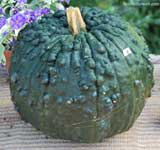
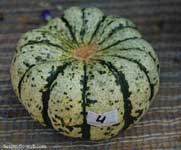
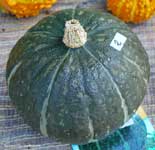
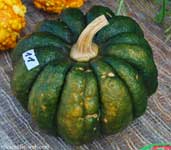
"Portuguese warty", "Sweet Dumpling", "Green Hokkaido", "Black Futsu Rinded",
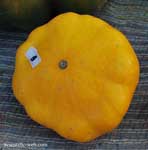
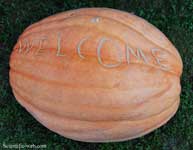
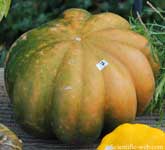
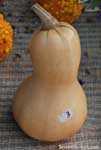
"Sunburst", "Atlantic Giant", "Muscade de Provence", "Butternut",
----
Cucurbita is a genus in the gourd family Cucurbitaceae first cultivated in the Americas and now used in many parts of the world[1][2]. It includes species grown for their fruit and edible seeds (the squashes, pumpkins and marrows, and the chilacayote), as well as some species grown only as gourds. These gourds (and other squashes) come in many colors, including blue, orange, yellow, red, and green. They have bicollateral vascular bundles. Many North and Central American species are visited by specialist pollinators in the apid group Eucerini, especially the genera Peponapis and Xenoglossa, and these bees can be very important for fruit set.
Cucurbita species are used as food plants by the larvae of some Lepidoptera species including Cabbage Moth, Hypercompe indecisa and Turnip Moth. Cucurbitin is found in Cucurbita seeds.[3]
Several species of Cucurbita are native to North America, including Cucurbita foetidissima (finger-leaved gourd), Cucurbita digitata (calabazilla), and Cucurbita palmata (coyote melon). These plants produce gourds and form large, fleshy, tuber-like roots. Some species, however, are native to South America, including Cucurbita pepo.
Food
Cucurbita species are often used as food, either for their fruit or the seeds lying within. The winter varieties have thick, inedible skins, and so store well. They are also very sweet. Summer squash, on the other hand, have a very thin skin, which can be eaten. The seeds inside can be ground into a flour or meal, roasted and eaten whole, made into pumpkinseed oil, or otherwise prepared.
Notes
1. ^ Whitaker (1947)
2. ^ Whitaker (1956)
3. ^ http://www.drugs.com/npp/pumpkin.html
References
* "Cucurbita". Integrated Taxonomic Information System. http://www.itis.gov/servlet/SingleRpt/SingleRpt?search_topic=TSN&search_value=22365. Retrieved 6 November 2002.
* Whitaker, T.W. (1947). "American origin of cultivated cucurbits". Annals of the Missouri Botanical Garden 34: 101–111.
* Whitaker, T.W. (1956). "The origin of the cultivated cucurbita". The American Naturalist 90 (852): 171–176. doi:10.1086/281923.
Retrieved from "http://en.wikipedia.org/"
All text is available under the terms of the GNU Free Documentation License

